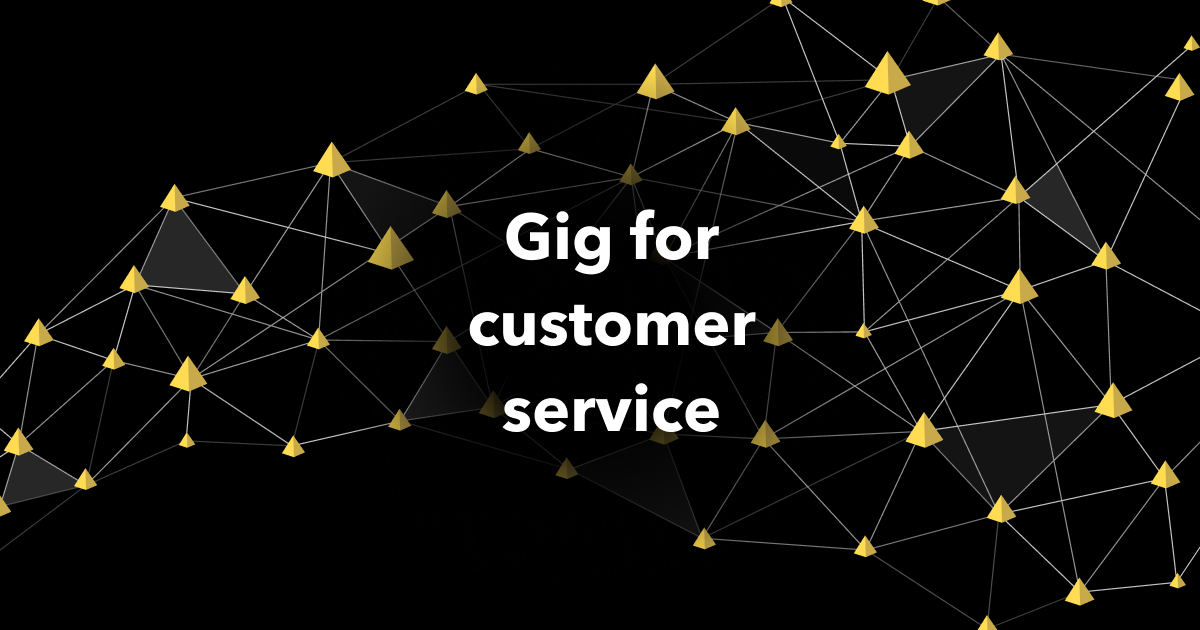Customer service leaders spend countless hours each year calculating costs – whether it’s part of their regular yearly budget planning or on the fly during a holiday or unexpected support surge.
I worked in account management for BPO contact centers for nearly two decades, however, you don’t need to look very closely to see where the customer service industry is heading:
-Customer expectations regarding quality of service will continue to rise, placing greater strain on contact centers
-The existing contact center model is becoming increasingly expensive
-More and more companies are deploying AI-powered technology in an attempt to resolve issues automatically to reduce the dependence on agents
One of the biggest drivers of those trends is the difficulty in finding and retaining top (human) talent. In other words, it’s hard to hire and keep agents that are willing to work in a traditional contact center — and, more importantly, are good at what they do.
And of course, the pandemic, as many have said, has been a disruptive force. As brick-and-mortar contact centers are just starting to re-open their doors, we don’t know the true impact of COVID-19 just yet.
The contact center concept was already failing its people
It has always been really difficult to find and keep good agents.
Industry estimates suggest the annual turnover for contact centers is in the range of 30-45%. From my experience in telecom, we sometimes saw annual turnover that was more like 80%. Put another way, if you had an agent pool of 200, you might only have 40 that make it an entire year.
Why? Agents face enormous pressure to resolve questions quickly and move on to the next issue. They work rigid and often odd hours — depending upon where they are in the world.
Even when things are going well, it’s a high-stress job, in which management places rigid requirements on the time spent on each interaction and number of resolutions per shift.
Add to this the fact that agents often represent products and services that they aren’t naturally interested in nor familiar with — until they start training (more on this in a minute).
So, it’s highly stressful, very inflexible work — and agents have little passion for it, which is a perfect recipe for turnover.
As we come out of the pandemic, I believe even fewer people will want to work in that kind of environment. As we’ve written about on this blog, more workers are interested in gig and freelance work than ever before because of its flexibility.
There’s no doubt in my mind: Finding and keeping traditional contact center agents will continue to become more difficult — and more expensive.
The financial cost of training agents
Let’s get into some numbers. To start, it’s important to highlight that customer service leaders carefully measure the performance of different channels based on a specific set of KPIs — metrics like cost per inquiry, resolution time, and customer satisfaction. But before they even get to that point, BPOs need to achieve what we used to call “speed to proficiency.”
The speed to proficiency is how long it takes for a team of contact center agents to be fully trained and live — and also it includes a buffer period of time where the team will be operational, but not measured against KPIs. The idea is that it takes time to accumulate real-time experience and improve performance. Sometimes, a contract will define the “speed to proficiency” as up to six months.
Meanwhile, the cost of that training period looks like this:
The company outsourcing to a BPO first determines how many seats, or agents, are needed for a set period of time. Once these agents are active, they likely cost in the range of $40 per seat per hour for a U.S.-based agent.
Before agents are active, BPOs will typically charge companies in the range of 50-75% of the billing rate for training. Depending upon the complexity of the company’s products or service, this agent training may range anywhere from 2 to 12 weeks, with most agents having little to no experience with the product or service they are going to support.
So, even at the lower end of this spectrum, a company could spend $320,000 (200 agents at $20/ hour for 2 weeks) before any agents are fielding any calls.
Sometimes, if a company is working with the BPO for the first time, the BPO will cover the cost of the initial training — or, more likely, include that expense in an introductory setup package so that those fees aren’t quite as obvious.
However, if a company increases the number of seats — for example, to increase coverage to account for expected holiday surges — that company will need to pay for the training of additional agents.
When it comes to turnover, BPOs won’t charge businesses for training new agents to backfill those open positions. However, BPO management certainly knows their attrition rates and factors them into the initial pricing of their business agreements. And while businesses don’t incur ongoing costs for that turnover, there’s a much more inherent cost from agent attrition: quality.
The hidden cost of agent turnover: quality of service
Remember “speed to proficiency?” Well, the problem with high turnover rates is that a pool of agents may never truly become proficient. Individual agents just aren’t around for long enough to truly master the nuances of a business or product line they are representing — and no robust training nor comprehensive scripts can offset the need for accumulated expertise.
So, what suffers is the quality of service — often resulting in frustrating experiences for customers and the loss of a customer’s business. We recently talked with one former call center agent — who’s now a Directly Expert — and he explained the turnover problem this way:
“There was always a huge turnover of agents, either due to hours or just because they didn’t like the work. Many agents simply didn’t care about resolving the issue. It was about the time spent on the issue that management cared about. They take the call and either follow whatever scripts they have or say, ‘Sorry, I can’t help you,’ and escalate it.”
The hidden cost of these negative experiences, while hard to define with a number, is much higher than you might expect. One study showed that 96% of customers are likely to leave a brand when they have one negative experience. The same study found that 38% of all customer service fell short of consumer expectations.
How the crowd upends the turnover picture
There are many reasons that alternative labor models — in addition to automation and technology — are important as companies seek more flexibility and scale in their customer service organization. Among them is the turnover problem.
The on-demand workforce is growing. People today prefer more flexibility in their work — and appreciate being rewarded for completing tasks and “gigs” — over being beholden to a company in a full-time capacity.
There’s an incredible amount of talent and expertise available in the crowd. At Directly, we help companies find and recruit expert users of their products and services to serve on the frontlines of their customer service. They don’t need the same kind of training — because they already understand and use the products or services they support. In fact, in a recent survey, we found 79% have at least three years of experience using that company’s products. Two-thirds of them also have previous customer service or technical support experience.
Because the training costs are minimal, our customers’ upfront costs are minimal — especially in comparison to a BPO. And because our experts come with years of built-in experience, our speed to proficiency is typically a few days — not several months.
Maybe the most important statistic we found in our recent survey was that 95% of our experts plan to continue working with us for at least the next year. That lack of turnover means businesses get continuity in their expert networks. There’s no retraining and no unknowns about quality of service.
Best of all, there’s passion. Unlike many call center agents, our experts are passionate about what they do. They love the products they are representing.
As one Directly expert — and former call center agent — recently told us, she was already answering questions for fellow users about the service she now officially supports. “Now I can get paid for doing what I’ve already been doing for years,” she said.
Why Directly Experts?
Directly delivers world-class customer service for leading Fortune 500 brands. Captive and outsourced contact center models increasingly can’t keep up with customer service demands, while self-service is only effective at deflecting simple contacts. Directly helps you troubleshoot a wide range of technical issues using on-demand experts. Customers like Microsoft, Samsung, and Airbnb to reduce contact center volume up to 40%, boost CSAT up to 20% and save millions per year. Contact us to set up a demo today.



